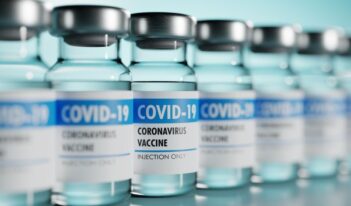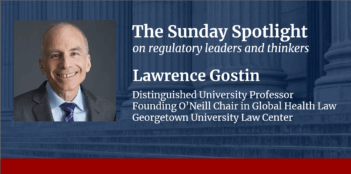
Mobile clinics seek to address disparities in health care delivery by dismantling barriers for rural Americans.
The only hospital in a small West Virginia county closed due to ongoing financial trouble amid the COVID-19 pandemic, leaving over 500 people unemployed and requiring some local patients to travel almost 40 minutes to the nearest medical center.
Across the United States, increased operating costs, lower reimbursement from insurers, and physician shortages have forced hundreds of similar rural health systems to close, presenting barriers to health care.
Yet mobile health clinics—an underused but innovative health care delivery model—may help address the access to care crisis in rural America, especially as COVID-19 continues to devastate these communities at disproportionate rates.
Mobile clinics are portable health facilities that travel to underserved areas to deliver high-quality care to residents at free to low cost. Although they do not substitute for a hospital emergency room in urgent cases, these clinics can compensate for gaps in traditional health care safety-net programs by traveling directly to communities and offering an extensive range of services, including dental, mental health, laboratory, and primary care. By offering preventive services, mobile clinics save the U.S. health care system over $1 billion in annual costs.
The roughly 2,000 mobile clinics in the United States provide care each year to about 7 million people, many of whom are uninsured and experiencing homelessness, financial hardship, or other conditions that make hospitals or conventional clinics inaccessible.
To support mobile clinics’ critical role in combatting disparities in health care access among rural patients, federal and state governments oversee and fund their operations. The U.S. Congress enacted the 1977 Rural Health Clinic Services Act to establish collaborative health care delivery models—such as non-hospital-affiliated facilities and mobile clinics—that rely on nurse practitioners and physician assistants as the main providers.
Under this law, all rural clinics must include at least one physician assistant or nurse practitioner to manage the medical staff. Promoting nurse-led care is just one way that mobile clinics address the physician shortage problem in rural areas.
The federal government reimburses rural health clinics—including mobile ones—for medically necessary primary care and preventive services. To qualify for Medicare or Medicaid reimbursement, a rural clinic must first obtain certification from the U.S. Department of Health and Human Services Secretary.
Certified clinics serve rural shortage areas—communities that do not count as urban centers according to the U.S. Census Bureau and have a percentage of households below the federal poverty level, high infant mortality rates, and limited primary care doctors, among other criteria.
As a condition of their federal certification and reimbursement, rural clinics that receive Medicare or Medicaid payments must also comply with state licensing and registration laws. Although some states have laws that build upon these federal regulations, other states have developed laws that also apply to mobile clinics beyond the rural health context.
For example, Alabama’s licensing regulations for independent laboratory clinics—facilities that provide clinical and physiological diagnostic testing and procedures—also apply to mobile units. As with rural clinics’ obligations under federal law, Alabama requires mobile laboratories to register with the state and establish and report an operating and location schedule.
Alabama, however, imposes heightened qualifications for directors of these particular mobile clinics. Alabama law allows only physicians or medical professionals with a doctoral degree and laboratory experience to direct these clinics, as lab-based mobile clinics might perform services that are more technical than primary care clinics’ services.
These restrictions might better ensure that qualified medical staff manage lab-based mobile clinics, but they might also present barriers to care in rural areas that face shortages of hospitals, standalone laboratories, and medical professionals with advanced degrees.
Unlike Alabama, other states have laws exclusively governing mobile health clinics. California’s Mobile Health Care Services Act, for example, has licensing, reporting, and operating requirements for mobile clinics similar to those in the federal regulations. Importantly, the Act does not restrict directorial positions to health professionals with certain medical education beyond the federal requirement that a nurse practitioner or physician leads the care team.
This structure has allowed mobile clinics across rural California to reach underserved populations, such as Latino farmworkers—many of whom face financial challenges, time constraints due to their work schedule, and barriers to transportation that limit their health care options.
Other states are now recognizing the importance of mobile clinics as health care delivery models during the COVID-19 pandemic. To address the recent closures of substance use facilities, Colorado launched a new federally-funded program that brings addiction services and treatment to rural areas. Teams of nurses, counselors, and peer specialists travel across Colorado in recreational vehicles equipped with exam rooms, containers for used syringe disposal, and medication for addiction treatment. Colorado’s program reveals how providers can deliver other forms of much-needed care in mobile clinics during public health crises.
Support for mobile clinics during national disasters also exists at a federal level. The Federal Emergency Management Agency (FEMA), for example, funds mobile clinics to travel to areas where a national disaster has hurt local medical systems.
To accelerate the COVID-19 vaccine rollout, President Joe Biden recently ordered FEMA to create mobile vaccination sites. Indeed, FEMA and local health systems have already begun vaccinating individuals—including those individuals who might lack access to online vaccine registries—at mobile sites across the country.
Yet barriers to establishing mobile clinics still exist, primarily due to funding limitations.
As COVID-19 continues to ravage communities, some advocates urge the federal government to offer more flexible funding opportunities to mobile clinics. These advocates warn that FEMA’s funding approval protocols are too time-consuming to address emergency situations efficiently.
But despite the finite funding for mobile clinics, the patchwork of laws on them, and the ongoing hardships of the COVID-19 pandemic, policymakers, health care providers, and public health professionals are starting to rely on mobile clinics to dismantle barriers to care for underserved populations.



